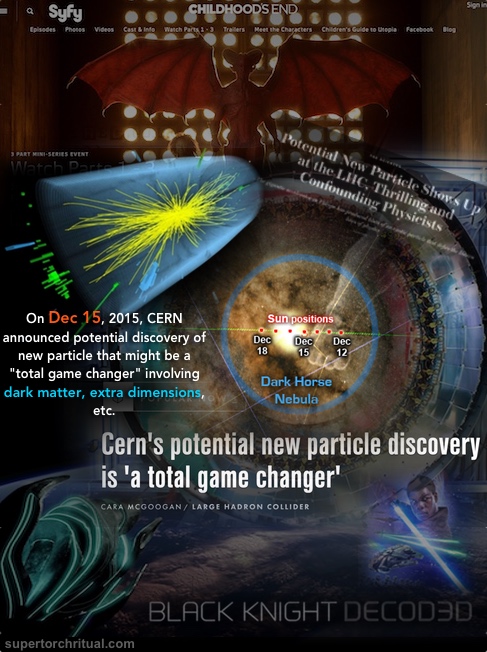By Prince Matthew of Theben.
Most of the central working assets, equipment, documents and records of the Templar Order in France, together with the majority of its Knights and Dames, Sergeants and Adjutantes, supporters and their families, successfully escaped shortly before the infamous raids beginning the French Persecution.
European historians established that there is “no doubt” that the Grand Mastery “was aware that the arrests were impending”, ordered for 13 October 1307 AD, while “the arrest orders were dated 14 September, so at the most the Templars had four weeks advance notice. … With a [purposely] depleted stockpile of workable assets… the Templars fled the area of immediate persecution before the hammer could fall.” [41]
The Templar trials recorded testimony of the Knight Jean de Chlon, who confirmed that the Order had advance warning of the impending raids, and had already arranged a fleet of 18 galleon ships to leave Port La Rochelle, visibly leaving behind a couple ships to avoid raising suspicions of their silent escape [42]:
This testimony specified that: “Gerard de Villiers, the Paris Preceptor, had escaped with 50 horses and 18 ships.” [43]
Templar Heroes Stayed Behind – The Temple Rule of 1129 AD commands self-sacrifice for one’s fellow Templars in times of peril:
“It is the truth… as if by a debt, that you must give your lives for your Brothers [and Sisters], just as did Jesus Christ” (Rule 56).
“That is: ‘I will avenge the death of Jesus Christ by my death. For just as Jesus Christ gave his body for me, I also am prepared in such manner to give my life for my Brothers [and Sisters]’. This is an appropriate offering, truly a living sacrifice and very pleasing to God.” (Rule 63) [44]
Precisely for this reason, for that purpose, and with this intent, the Grand Master Jacques de Molay with a group of dedicated Knights stayed behind, to avoid causing suspicion, thereby allowing the majority to escape to safety.
Relocating the Templar Order – As a result of this self-sacrifice, historians established that “Only 620 Templar personnel are known to have been arrested in France” in 1307 AD, and “estimate that there were over 3,000 Templars” in France, such that “over 2,000 fully armed and equipped Templar[s], with their entire retinues of squires, servants, horses, baggage trains and camp followers”, in fact did escape, and boarded the 18 ships which left Port La Rochelle [45].

‘Marina a Vela’ Templar Ship, by Hendrik Cornelisz Vroom (ca. 1562 AD)
European historians documented that “the Templars managed to disperse most of their portable wealth before the King’s henchmen came to confiscate it. Indeed, the royal agents found monasteries that had in large part been abandoned… [then] they found the ships had set sail”.
Other “Templar fleets in the south and north of France, Flanders, and Portugal also left port – and sailed into legend. … Also missing from the Templars’ strongholds were the documents and records” of the Order. [46]
For the Order to survive as an underground network, the Templars “fell back on their second career, finance and trade. … Most of the Templar wealth was out in the field earning interest and revenue for the Order… the money would be transferred to those branches still open and put to even greater use to recover the recent losses.”
In addition to the 18 ships which escaped from Port La Rochelle, “the vast majority of Templar ships, both merchant vessels and armed galleons… would surely have been doing what the Templars did best – plying [working] the seas of the Mediterranean and Atlantic, earning money to keep the Order financially sound.” [47]
Templars Established Country of Switzerland
Ancient Switzerland was essentially undeveloped and unorganized, consisting of tribal frontier regions, and only the Valais region became governed by the French Bishop of Burgundy in 999 AD [48]. With involvement of the Knights Templar, the first three Cantons of Switzerland were founded in 1291 AD. Swiss government historians documented that by 1300 AD, the Templar Order was prominently active in Switzerland, and established autonomy of the Valais region:
“In 1260 AD… [Count] Peter II seized the castle of Martigny, [giving] access to the ‘Great Saint Bernard’, and forced the Bishop to yield to him… the Episcopal Valais [region]. … The recognition of his sovereign rights in 1293 AD and … under [Prince] Pierre IV of Tours in 1294-1299 AD reinforced the position of the ‘Prince Bishop’.” [49]
As the founding Templar Patron Saint Bernard de Clairvaux had already died in 1153 AD, this coded reference to the “Great Saint Bernard”, developing Swiss Valais as a Principality since 1260 AD, can only mean the Templar Order as a major world institution. Confirming this, the unusual “Prince Bishop” model of sovereign autonomy for Valais directly mirrors the distinctive “Prince Grand Master” model of sovereignty of the Templar Order [50] [51] [52] [53].
Therefore, when the French Persecution began in 1307 AD, the Templar Order had already completed at least seven years of actively preparing Switzerland to be a safe haven under a sovereign Prince Bishop, fully establishing a practical backup plan for any future escape and survival.
When the 18 galleon ships left Port La Rochelle in France, the Templars were able to sail north to the Netherlands of the Teutonic branch of the Order, to dock and keep their ships, and then travel south to Switzerland.
Relocation Also by Land Routes – In addition to the ships, as an easier and less noticeable escape route, even more of the Templars were able to travel by land, directly east to Switzerland. European historians confirmed:
“Trade routes to Northern Italy ran through the passes of Switzerland… paths regularly trodden by Templar traders… while [King] Philip’s attention was deliberately being focused on the West coast of France, anything of value that the Templars wished to preserve was being slowly and systematically transferred overland to the East. There were dozens of routes from France into the Alps” [54].
Indeed, on medieval maps, the Templar region of Valais is located on a major trade route in a direct line from Burgundy France to Milan Italy.

Niederrohrdorf 12th century Coat of Arms with Templar Agnus Dei
Templars Founded Swiss Nation – During the 13th century, “nothing like the present State of Switzerland even existed”, and it was mostly “a complex series of nominally independent dukedoms and fiefdoms”.
When the first Cantons formed in 1291 AD, “folk tales began to spread regarding the assistance that the new alliance received from white-clad Knights, whose vestments bore the familiar Red Cross of the Templars. … And the fact that tales of white-clad Knights assisting the first struggling Swiss Cantons preceded the events of 1307 AD surely [evidences] that the Templars began to take steps to ensure their own survival”. [55]
Swiss Flag from Templar Flag – The medieval Swiss city Nidern Rordorf since 1179 AD [56] has as its coat of arms the distinctive Templar “Agnus Dei” (Lamb of God) bearing the Templar Red Cross on a white flag [57], which comes from the official Templar Grand Mastery Seal used in England (since 1160 AD) [58]. This evidences the Templar origins of the Swiss national flag, as established by European historians:
“It is no coincidence… that the very flag of Swiss nationhood is simply a reversed version of the most famous Templar motif, for instead of being a Red Cross on a white field, it is a white cross on a red field. Research into the origins of the Swiss flag revealed… the folk tales of white-clad Knights fighting bloody battles for the fledgling confederation.”
“[Thus] the very flag of this neutral nation of Switzerland is none other than a representation of… those Templars who fought for the freedom of the embryonic Swiss nation.” [59]
The reversal of Templar colours for the Swiss flag is also from the Templar galleon ships which escaped from France and abandoned other parts of Europe to relocate to Switzerland. Different from the flag of the Templar Principality which is half black on the top, the Templar ships for practical reasons had entirely white sails, marked only with a Red Cross.
In customary heraldic law of State flags, this reversal of flag colours symbolizes the reversal of Templar support for France, and the reversal of Templar public missions to serve as an underground network, through establishing the modern country of Switzerland.
Swiss Neutrality for Templar Survival – The Templar Order had to escape the French Persecution of 1307 AD, which was driven exclusively by corrupt politics of secular States. It then activated its survival plans to relocate mostly to Switzerland, to finish developing and establishing it as an independent Templar State capable of protecting their human rights.
As a result, political “Neutrality” became the most pressing necessity, as a strategic policy to ensure survival of the Templar Order. The Knights Templar thus made geopolitical neutrality the essential foundational policy of Switzerland, to protect it as an emerging Templar State. Therefore, the famous principle of strict political “Swiss Neutrality” is a distinctive trademark of the surviving Templar Order.
European historians documented: “Switzerland as a whole became synonymous with the ‘right to personally held beliefs’. … Switzerland remains almost pathological in its Quest for Neutrality… Switzerland represents exactly what a Templar State would have been destined to become… Underlying the whole Swiss experiment is the search for an equitable, democratic society, where each individual retains an importance to the whole, no matter what the language, political beliefs or religious persuasion of that person might be.” [60]
Rescue Dog Named “Saint Bernard” – Further reflecting the Templar foundations of Switzerland as a Templar State for survival of the Order, the iconic and legendary Swiss national rescue dog is named the “Saint Bernard”. This faithful dog is evidently dedicated to the Templar Patron Saint Bernard de Clairvaux (canonized 1174 AD), who established and implemented survival plans with Popes and Bishops as Templar loyalists.

‘Saint Bernards to the Rescue’ by John Emms (2015) at Fine Art America
During the Middle Ages, “Saint Bernard” dogs were originally called “Alpine Mastiffs”, named after the “Alpine Pass”, the same major trade route through Switzerland (between France and Italy) extensively used for centuries by the Knights Templar.
Although a previous “Saint Bernard of Menthon” (1020-1081 AD) founded a monastery and traveler shelter at the highest peak of the Alpine Pass ca. 1045 AD, he was not canonized as a Saint until 1681 AD, that monastery did not use dogs until 1707 AD, and dog rescues were not reported until 1800 AD.
The Alpine Mastiffs were officially named “Saint Bernards” by the Swiss Kennel Club in 1880 AD [61], and officially recognized as the “Swiss National Dog” in 1887 AD [62].
The Monk Bernard of Menthon was not declared the Patron Saint of the Alps until the modern era in 1923 AD [63]. In contrast, the historical record evidences that since 1260 AD, and thus throughout the Middle Ages into the Renaissance, the Templar Order was already widely known in Switzerland by the affectionate nickname of “The Great Saint Bernard” [64].
A national mascot must reflect the founding heritage of the nation, such that the Swiss mascot must have been named after the Templar foundations and underlying Templar heritage of Switzerland, which led the Swiss nation out of the Middle Ages and into the Renaissance. It is thus most logical and probable, that the “Saint Bernard” dogs were actually named after the 12th century Templar Patron Saint Bernard de Clairvaux.
Modern Swiss Templar Culture – Modern Switzerland was first recognized as a sovereign country, with declared geopolitical neutrality, by the Treaties of Westphalia in 1648 AD. It was a founding Member State of the League of Nations in 1920 AD, and became a full Member State of the modern United Nations only as late as 2002 AD.
Expressing the traditional Knights Templar principles and culture from its medieval foundations, and reflecting the Templar Order continuing into the modern era, Switzerland is the birthplace of the international Red Cross medical charity, which originated in Geneva in 1863 AD, and expanded as the Red Cross and Red Crescent Movement since 1919 AD.
Templar Survival Defending Scotland
The Knights Templar first established their influence in Scotland in 1128 AD, when the Angevin King Henry I of England arranged the introduction of the first Templar Grand Master Hughes de Payens to King David I of Scotland. King David granted the Templar Order its headquarters and Preceptory of Balintradoch in 1129 AD, later renamed the town of “Temple” in Midlothian, located seven kilometers from Rosslyn.
Soon the Knights Templar were landlords owning over 500 sites in Scotland. Evidencing recognition as a sovereign non-territorial Principality in its own right, the Templar Order, and even tenants on its lands, were exempt from all tithes and taxes, and also from all courts or jury duty. [65]
King David I of Scots appointed the Templars as “the Guardians of his morals by day and night”, establishing a strong tradition of the Knights Templar serving as Royal Advisors to all Scottish Kings. [66]
Robert the Bruce Supported Templars
King Robert I of Scots, “Robert the Bruce”, the 4th great grandson of King David I, led the First War of Scottish Independence against invading England.

Robert I ‘The Bruce’ and his wife Isabella, in ‘Forman Armorial’ (1562 AD), produced for Mary Queen of Scots, in National Library of Scotland (Detail)
In 1306 AD, Robert the Bruce was excommunicated by Pope Clement V for killing his rival John “the Red” Comyn during his accession to the throne. This made him sympathetic to the Templar Order during the French Persecution of 1307 AD, and gave him personal motivations to give the Templars refuge and an active role in defending Scotland. [67] [68] [69]
European historians documented: “There is much to indicate that Robert the Bruce [held] more than a passing interest in Templarism… he had strong Templar and Crusader leanings; so much so, that at his death he had left instructions that his heart should be taken on Crusade and buried in Jerusalem.” [70]
In 1308 AD, giving in to French pressure, King Edward II of England arrested only a few dozen Templars, allowed limited Templar trials during only one year from 1309-1310 AD (which included the Temple Preceptory in Scotland), and all Templars were acquitted and released. In 1312 AD, however, Edward II adopted the Papal Bull Vox in Excelso, and thus “suppressed” the Templar Order in both England and Scotland.
However, as Robert the Bruce was already purportedly excommunicated by the Pope, and was determined to support the Knights Templar, he did not allow any trials nor suppression in the territories directly controlled by Scotland.
Templars Supported Robert the Bruce
In 1314 AD, seven years after the French Persecution of the Knights Templar, and two years after the Vatican’s “suppression” of the Order, Robert the Bruce famously sent the English army “hameward tae think again”, at the Battle of Bannockburn, which primarily won the War of Scottish Independence.
An American lawyer and Scottish historian established by “statistical analysis” that more Templars also arrived from France and other parts of Europe, with “at least 335 avoiding capture” by fleeing to Scotland.
In addition to numerous Templars already in Scotland, the arriving Templars included “at least 29 battle-hardened Knights and Sergeants… as [many] as 48 [Templars]”. The research concluded: “Given the battle plan… for Bannockburn… the Templars were necessary… The existence of Templars at Bannockburn follows a consistent line of facts.” [71]
Historians have documented 14th century accounts in the historical record, evidencing active Templar military support of Robert the Bruce:
“Templar forces reportedly fought alongside the King in 1314 at the Battle of Bannockburn… Contemporary chroniclers maintained that the superior military skills of the Templars tipped the battle in Bruce’s favor”.
“According to legend, despite their superior numbers, the English forces fled the field when the Templars seemed to appear out of nowhere, charging from the hidden rear of the regular Scottish troops. The image of the Templars, with their white tunic and Red Cross, looked as though the ghosts of the long ago Crusades had suddenly materialized to provide miraculous assistance to the outnumbered Scots. Although his troops were actually winning the battle, the English King, Edward II, retreated in terror upon seeing these ghostly apparitions”. [72]
Survival of Templars Through Other Orders
Direct lines of successive generations of initiatory cultural and chivalric Templars survived into the modern era, preserving and continuing the original Templar missions. In addition to the immediate and primary survival plan originally established by Saint Bernard, during the decades after the French Persecution, living Templars and their descendants continued Templar Chivalry through joining several other Orders.
Specifically, surviving Templars joined the following Orders (indicating dates of joining, with date range of continuation):
Franciscan Sacred Order in England (1307-present), Franciscan Vatican Order (1307-present), Ancient Celtic Churches (1307-present), German Teutonic Order (1312-1929), Spanish Montesa Order (1317-1587), Portuguese Knights of Christ (1319-1789), and Rosicrucian Mystical Order (1407-present).
Franciscan Sacred Order – The surviving Knights Templar in England and Western Europe successfully followed the survival plan established by Saint Bernard, and pre-arranged with the Franciscan Sacred Order:
The Templar Order primarily continued through the “Sacred Order of Saint Francis of Assisi”, established in England in 1212 AD, which was already dedicated to that purpose as a “Secular Franciscan Order” since 1221 AD, as Guardians of the “Templar Lines” of Sovereign Succession through the Independent Church Movement [73].
When the French Persecution began 86 years later in 1307 AD, nothing further needed to be done, and the Templars simply traded their chivalric tunics for Franciscan brown monastic robes. “Mission Accomplished”.
In 1520 AD Pope Leo X, a Templar revivalist, supported Templar survival through the Franciscan Sacred Order by expanding the Independent Church Movement, granting the Papal Bull Debitum Pastoralis to the Bishop of Utrecht, who was a Teutonic Knight promoting surviving Templarism [74].
Franciscan Vatican Order – From 1307-1312 AD, many Templars throughout Western Europe either joined the autonomous Franciscan Sacred Order in England, or it facilitated to arrange them joining the Franciscan “Tertiary (Secular) Order” of the Vatican, somewhat analogous to the role of Knights and Dames.
However, the Vatican Franciscan Order does not carry the “Templar Lines” of Apostolic Succession which are unique to the independent Anglican Sacred Order.
As a purely monastic Order, it does not grant knighthood or damehood. The modern Tertiary Order under the Vatican has almost 600 Clergy and 300 Secular members [75].
Ancient Celtic Churches – From 1307-1312 AD, many Templars in Scotland, Ireland, and throughout Western Europe joined Ancient Celtic Churches within the Independent Church Movement (founded 1145 AD).
These Celtic Churches originated from Ancient Celtic Priesthoods of England, Scotland and Ireland, which became an Apostolic “Celtic Catholic” line (from Saint Mark in 336 AD, through Saint Silverius in 536 AD, and Saint Nicholas I in 858 AD), and “Celtic Anglican” line (from Saint David, first Celtic Bishop of Mineva in Wales in 519 AD, through Celtic Archbishops of Canterbury).
In 1520 AD Pope Leo X, a Templar revivalist, supported Templar survival through the Ancient Celtic Churches by expanding the Independent Church Movement, granting the Papal Bull Debitum Pastoralis to the Bishop of Utrecht, who was a Teutonic Knight promoting surviving Templarism [76].
As individual autonomous Churches, not yet consolidated to act collectively through a unified independent Sovereign Pontificate established under Canon law in customary law, they could not create any Orders of Chivalry [77] [78] [79], and thus could not grant nor arrange knighthood or damehood.
Teutonic Vatican Order – Starting in 1312 AD, many Templars in Germany or Eastern Europe joined the Order of Teutonic Knights of the Vatican (founded 1190 AD), which was already an official but autonomous branch of the Templar Order [80] [81].
The Teutonic Order continued as such for 739 years, until it was “reformed” in 1929, “re-established” in 1957, and “restructured” in 1965, becoming the “Order of the German House of Saint Mary in Jerusalem”. The modern Order of Mary has about 300 Clergy and 700 secular “Familiares” in a role analogous to Knights [82], but does not grant knighthood or damehood.
Surviving Templars from the Teutonic Order, after 1929, joined the Franciscan Sacred Order in England, Franciscan Vatican Order, Ancient Celtic Churches, or Rosicrucian Mystical Order (all continued to the present day).
Spanish Montesa Order – In 1317 AD, King James II of Spain “obtained from Pope John XXII… the possessions of the Templars in his Kingdom”, to create the “Military Order of Montesa… established… to take the place of the Order of the Temple… [as] the continuation.” The Order of Montesa was placed under the Cistercian Rule, and based upon the Templar Order. [83]
Thus in 1317 AD, Pope John XXII, a Templar revivalist, supported Templar survival through the Order of Montessa by granting it Vatican Patronage.
Starting in 1317 AD, many Templars in Spain or Western Europe joined the Order of Montesa.
The Order of Montesa (from 1317 AD) operated for 270 years, until it was “united with the Crown” in 1587 AD, thereby dissolving it [84].
Surviving Templars from the Order of Montesa, after 1587 AD, joined the German Teutonic Order (until 1929), Portuguese Knights of Christ (until 1789), or joined the Franciscan Sacred Order in England, Franciscan Vatican Order, Ancient Celtic Churches, or Rosicrucian Mystical Order (continued to the present day).
Portugal Knights of Christ – In 1319 AD, in Portugal the Knights Templar were cleared of all charges, and Pope John XXII, a Templar revivalist, supported Templar survival by merely renaming the Portuguese branch of the Order to “Knights of Christ”, allowing to keep their assets.
Starting in 1319 AD, many Templars in Portugal or Western Europe joined the Knights of Christ.
In 1740 AD Pope Benedict XIV, a Templar revivalist, supported Templar survival as the “Knights of Christ” by granting the former headquarters of the Knights Templar to the King of Portugal for the renamed Order.
The Knights of Christ (from 1319 AD) operated for 470 years, until it was dismantled in 1789 AD: It was reduced to an “honourary decoration of merit” by Queen Maria I in 1789 AD, fully “extinguished” with the end of the Portuguese Monarchy in 1910 AD, and later “reformulated” and “reinstated” in 1918 only as an “honorary award” under the President of the modern Republic of Portugal [85] [86].
A doctrine of customary international law holds that a “new government” of a modern secular “Republican State” does not have legal capacity of “rights of Fons Honourum” for the “exercise of heraldic jurisdiction” to maintain, revive nor even recognize Orders of Chivalry [87] [88] [89] [90]. Therefore, the modern Knights of Christ is not an Order of Chivalry, and thus does not grant knighthood or damehood.
Surviving Templars from the Knights of Christ, after 1789 AD, joined the German Teutonic Order (until 1929), or joined the Franciscan Sacred Order in England, Franciscan Vatican Order, Ancient Celtic Churches, or Rosicrucian Mystical Order (continued to the present day).
Rosicrucian Mystical Order – In ca. 1407 AD, the surviving Knights Templar in Portugal (renamed “Order of Christ” since 1319 AD) helped establish the Rosicrucian Order, named after the trademark Templar Red Cross, or “Rose Cross”, thus “Rosa-Cruz” (Portugese) or “Rossi-Croce” (Italian).
This is evidenced by the fact that the Portuguese Templar headquarters, the “Convent of the Order of Christ”, features three artifacts of a Rose at the center of a Cross in the initiation room, dated ca. 1530 AD [91] [92]. This establishes that many surviving Templars helped create and develop the Rosicrucian Order from 1407-1530 AD.
Starting in 1407 AD, and even more after 1530 AD, many Templars throughout Western Europe joined the Rosicrucian Mystical Order.
In 1740 AD Pope Benedict XIV, a Templar revivalist, supported Templar survival through the Rosicrucian Order by restoring “Templar Rosicrucian” lines of Apostolic Succession, “reinstating” those lines in the Vatican [93], and also by establishing the first Vatican “Academy of Antiquities” [94] to continue the Templar mission of exploring ancient origins of Christianity.
The Rosicrucian Order, as an esoteric society, was never established with sovereign authority, and thus by customary international law, it is not an Order of Chivalry [95], and thus does not grant knighthood or damehood.
Results Through Other Orders – In the end result, Templars from the original Order of the Temple of Solomon survived through other Orders, actively continuing Templar missions and living the Templar life of Chivalry, directly into the modern era.
After the other Orders of Chivalry which could grant knighthood and damehood ended, in 1587 AD (Spain), 1789 AD (Portugal) and 1929 AD (Germany), surviving Templars continued Templar missions through the Franciscan Sacred Order, Franciscan Vatican Order, Ancient Celtic Churches, and Rosicrucian Mystical Order.
However, none of these remaining institutions of Templar survival were Orders of Chivalry, and thus could not grant knighthood or damehood.
Also, only the Sacred Order of Saint Francis of Assisi in England (since 1212 AD) preserved and carried the rights of Templar Sovereign Succession, through the rare and unique “Templar Lines” of Apostolic Succession.
Therefore, from 2007-2013, the Franciscan Sacred Order completed the original plan from Saint Bernard, by reunification with surviving cultural and chivalric Templars from Ancient Celtic and Rosicrucian branches of the Old Catholic Churches, to restore and re-establish the Templar Order to full legitimacy. https://www.knightstemplarorder.org/survival-lineage/





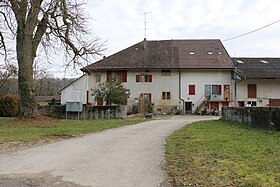










 ‘Marina a Vela’ Templar Ship, by Hendrik Cornelisz Vroom (ca. 1562 AD)
‘Marina a Vela’ Templar Ship, by Hendrik Cornelisz Vroom (ca. 1562 AD)


 Niederrohrdorf 12th century Coat of Arms with Templar Agnus Dei
Niederrohrdorf 12th century Coat of Arms with Templar Agnus Dei

 ‘Saint Bernards to the Rescue’ by John Emms (2015) at Fine Art America
‘Saint Bernards to the Rescue’ by John Emms (2015) at Fine Art America

 Robert I ‘The Bruce’ and his wife Isabella, in ‘Forman Armorial’ (1562 AD), produced for Mary Queen of Scots, in National Library of Scotland (Detail)
Robert I ‘The Bruce’ and his wife Isabella, in ‘Forman Armorial’ (1562 AD), produced for Mary Queen of Scots, in National Library of Scotland (Detail)










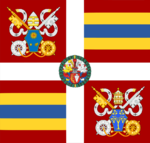



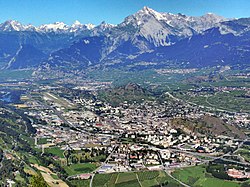





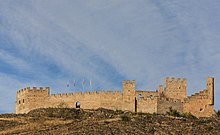



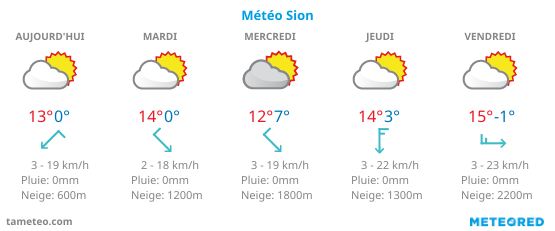


![[Flag of Sion]](https://www.crwflags.com/fotw/images/c/ch-vs135.gif)
![[Flags Diocese and Bourgeoisie]](https://www.crwflags.com/fotw/images/c/ch-vs135-bd.jpg)
![[Flag of Les Agettes]](https://www.crwflags.com/fotw/images/c/ch-vs049.gif)
![[Flag of Salins]](https://www.crwflags.com/fotw/images/c/ch-vs133.gif)
















